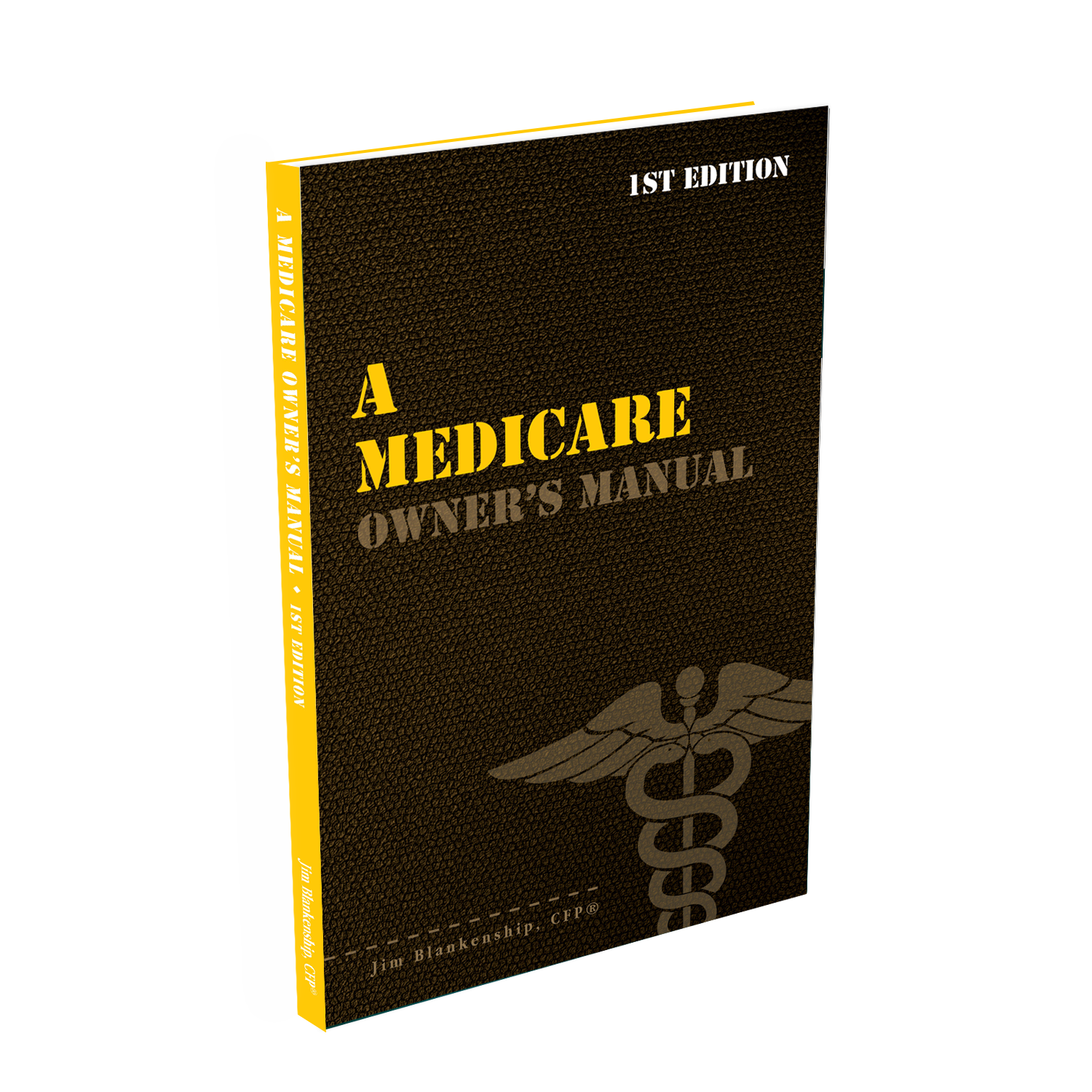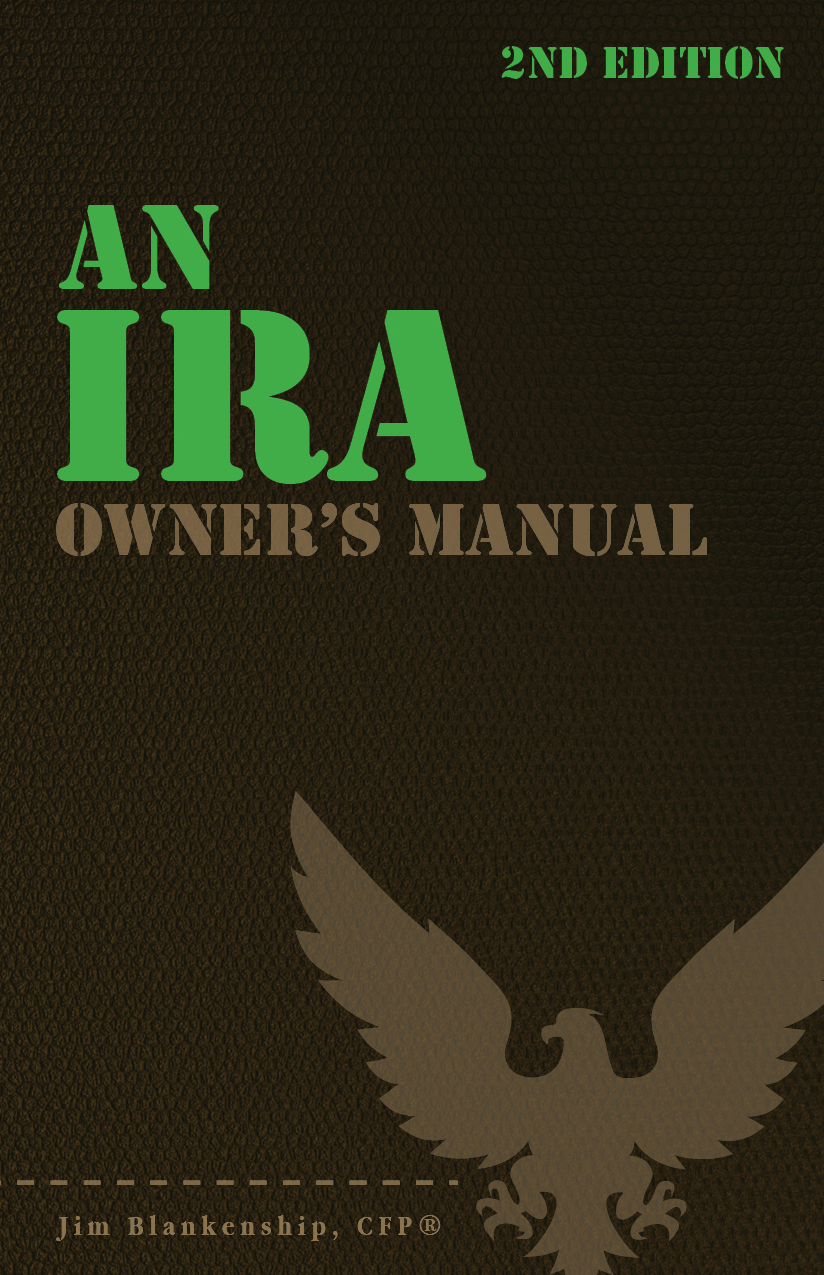When calculating your Series of Substantially Equal Periodic Payments (SOSEPP), provided for under §72(t)(2)(A)(iv) of the Internal Revenue Code, one of your choices is the Fixed Amortization method. Calculating your annual payment under this method requires you to have the balance of your IRA account. With this balance you then create an amortization schedule over a specified number of years equal to your life expectancy factor from either the Single Life Expectancy table or the Joint Life and Last Survivor Expectancy table, using the age(s) you have reached (or will reach) for that calendar year. The amortization table must use a rate of interest of your choice, but the chosen rate cannot be more than 120% of the federal mid-term rate published by regularly the IRS in an Internal Revenue Bulletin (IRB). Which table you use is based upon your circumstances. If you are single, or married and your spouse is less than […]
qrp
SOSEPP – Fixed Annuitization method
When calculating your Series of Substantially Equal Periodic Payments (SOSEPP), provided for under §72(t)(2)(A)(iv) of the Internal Revenue Code, one of your choices is the Fixed Annuitization method. Calculating your annual payment under this method requires you to have the balance of your IRA or 401(k) account and an annuity factor, which is found in Appendix B of Rev. Ruling 2002-62 using the age you have reached (or will reach) for that calendar year. You will then specify a rate of interest of your choice that is not more than 120% of the federal mid-term rate published by regularly the IRS in an Internal Revenue Bulletin (IRB). Once you’ve calculated your annual payment under the Fixed Annuitization method, your future payments will be exactly the same until the SOSEPP is no longer in effect. There is a one-time opportunity to change to the Required Minimum Distribution method. For more details on […]
Early Withdrawal of an IRA or 401(k) – SOSEPP
This particular section of the Internal Revenue Code – specifically §72(t)(2)(A)(iv) – is the most famous of the 72(t) provisions. This is mostly due to the fact that it seems to be the ultimate answer to the age-old question “How can I take money out of my IRA or 401(k) without penalty?” While it’s true that this particular code section provides a method for getting at your retirement funds without penalty (and without special circumstances like first-time home purchase or medical issues), this code section is very complicated. With this complication comes a huge potential for costly mistakes – and the IRS does NOT forgive and forget! A Series of Substantially Equal Periodic Payments, or SOSEPP is just what it sounds like. You withdraw a specified amount from your IRA or 401(k) every year. The specified amount is not always the same (hence “substantially” equal) but the method for determining the […]
Beyond – Beyond 401k and IRA
As a follow up to my post last week Beyond 401k and IRA, I discovered this week that I had neglected to point out a relatively new option that is very well worth considering. This option was brought to my attention by my friend and colleague (and fellow GPN member) Lisa Weil of Clarity Northwest Wealth Management in Seattle, WA: as of late last year with the issuance of IRS Notice 2014-54, there is the option of over-funding your 401k with after-tax dollars, and then rolling over those monies to a Roth IRA when you leave employment. The way it works is that after you max out your regular deducted 401k contributions, plus your company provided the matching funds, there is usually quite a bit of headroom available within the annual funding limits. You can (if your 401k administrator allows) make after-tax contributions to your 401k up to the limit […]
Where to Start With Retirement Savings
Today, we have so many choices for our retirement savings that it can be difficult to choose which sort of account to contribute to. If you are fortunate enough (as many are) to have more than one type of retirement plan available to you, in what order should you contribute to the accounts? Right now, at the beginning of a new year, is an excellent time to start with retirement savings. Qualified Retirement Plans First of all, many folks who are employed by a company have some sort of tax-deferred, qualified, retirement savings account available. These accounts go by many names – 401(k), 403(b), 457, and deferred compensation. These accounts are collectively referred to as qualified retirement plans, or QRPs. QRPs do not include IRAs – this is another type if retirement savings account with some different rules. A QRP account is a good place to start when contributing to […]
2015 Contribution Limits for Retirement Plans
The IRS recently published the new contribution limits for various retirement plans for 2015. These limits are indexed to inflation, and as such sometimes they do not increase much year over year, and sometimes they don’t increase at all. This year we saw a few increases for some contribution amounts, and the income limits increased for most types of accounts after virtually no changes to the contribution amounts in 2014.
IRS Notice 2014-54: Will This Clarify NUA Basis Allocation?
Recently the IRS issued a Notice, 2014-54, which details some information regarding the allocation of pre-tax funds from a qualified plan (such as a 401(k) plan) into a Roth IRA. This is a clarification of a question that has been on the minds of folks in the financial services industry for some time, and it’s a good result. Now the question becomes: does this help to clarify NUA basis allocation strategies? If you’d like additional detail on Notice 2014-54, you can find the actual text of the Notice by clicking this link. What I find interesting about this Notice is that this is the first time that the IRS has used this interpretation of the rules referenced specifically in IRC Section 402(c)(2), which is the code section I’ve referenced before regarding allocation of basis for Net Unrealized Appreciation (NUA) treatment for employer stock. (See more information in this most recent […]
Why You Should Participate in a 401(k)
We all know that we should save money for a rainy day, a message we’ve received since we were little ones, but this article covers some more reasons why you should participate in a 401(k) plan, if you have one available. It’s on you Back in the olden days when the earth was still cooling, employees could count on (or at least thought they could count on) a pension benefit from their employer upon retirement. This pension plan provided a safety net that allowed the employee to go into retirement with relatively little concern about whether there would be enough money to live on.
Roth 401(k) Rules
If your employer has a 401(k) plan available for you to participate in, you may also have a Roth 401(k) option available as a part of the plan. (We’re referring to 401(k) plans by name here, but unless noted the rules we’re discussing also apply to other Qualified Retirement Plans (QRPs) such as 403(b) or 457 plans.) Roth 401(k) plans are not required when a 401(k) plan is offered, but many employers offer this option these days. The Roth 401(k) option, also known as a Designated Roth Account or DRAC, first became available with the passage of the Economic Growth and Tax Relief Reconciliation Act (EGTRRA) of 2001, with the first accounts available effective January 1, 2006. The Roth 401(k) was designed to provide similar features present in a Roth IRA to the employer-provided 401(k)-type plans. Similar to traditional 401(k) Certain features of the Roth 401(k) are similar to the traditional […]
Investment Allocation in Your 401(k) Plan
When you participate in your employer-sponsored 401(k) plan (or any type of Qualified Retirement Plan, including 403(b), 457, etc.), the first step is to determine how much money you will defer into the plan. We discussed this previously in an article about contributions to your 401(k) plan. Once you’ve determined the amount you’ll contribute, the next step is to allocate your funds within the account. This starts with an overall plan for your investment allocation – which you should take time to plan in advance. For the purposes of our illustration here, we’ll say that you have a plan to split your account 75% to stocks and 25% to bonds. Within the stock allocation, you want to split this as 1/3 each to large cap stock, small cap stock, and international stock. In the bond category you want to split this to 80% domestic bonds and 20% international bonds. Now […]
Mechanics of 401(k) Plans – Loans
Continuing our series of articles on the mechanics of 401(k) plans, today we’ll talk about loans from the account. As with all of these articles, we’ll refer generically to the plans as 401(k) plans, although they could be just about any Qualified Retirement Plans (QRPs), including 403(b), 457, and other plans. Unlike IRAs, 401(k) plans allow for the employee-participant to take a loan from the plan. There are restrictions on these loans, but they can be useful if you need funds for a short-term period and have no other sources. 401(k) Loans If you have a balance in your 401(k) account, often your plan administrator will have a provision allowing you to take a loan of some of the funds in the account. (Not all plans allow loans – this is an optional provision, not a requirement.) Sometimes the plan administrator will place restrictions on the use of the loan […]
Mechanics of 401(k) Plans – Distribution
For the next in our series of articles regarding the mechanics of 401(k) plans, we’ll review distributions from the plan. As with our other articles in this series, we’re referring to all sorts of qualified retirement plans (QRPs) – including 401(k), 403(b), 457, and others – generically as 401(k) plans throughout. There are several types of distributions from 401(k) plans to consider. Distributions before retirement age and after retirement age are the two primary categories which we’ll review below. Another type of distribution is a loan – which will be covered in a subsequent article. But first, we need to define retirement age. Generally speaking, retirement age for your 401(k) plan is 59½, just the same as with an IRA. However, if you leave employment at or after age 55, the operative age is 55. If you have left employment before age 55, retirement age is 59½. This means that […]
Mechanics of 401(k) Plans – Vesting
In this article in our series on the mechanics of 401(k) plans, we’ll be covering the concept of vesting. As with the other articles in the series, we’ll refer specifically to 401(k) plans throughout, but most of the provisions apply to all types of Qualified Retirement Plans (QRPs), which go by many names: 401(k), 403(b), 457, etc.. Vesting refers to the process by which the employer-contributed amounts in the 401(k) plan become the unencumbered property of the employee-participant in the plan. Vesting is based upon the tenure of the participant as an employee of the employer-sponsor of the plan. Generally, when an employee first begins employment there is a period of time when the employer wishes to protect itself from the circumstance of the new employee’s leaving employment within a relatively short period of time. Vesting is one way that the employer can protect itself from handing over employer-matching funds […]
Mechanics of 401(k) Plans – Employer Contributions
This is the second post in a series of posts that explain the mechanics of a 401(k) plan. As mentioned previously, there are many types of Qualified Retirement Plans (collectively called QRPs) that share common characteristics. Some of these plans are called 401(k), 403(b), and 457. In these articles we’ll simply refer to 401(k) plans to address common characteristics of all of these QRPs. Employer Contributions Many companies provide a matching contribution to the 401(k) plan – and sometimes there is a contribution made to a QRP on your behalf no matter if you have contributed your own deferred salary or not. Most of the time these matching contributions are stated as x% of the first y% of contributions to the account. An example would be “50% of the first 6%”, meaning if you contribute 6% of your salary to the plan, the company will match that contribution with 3% […]
Mechanics of 401(k) Plans – Saving/Contributing
Many folks have a 401(k) plan or other similar Qualified Retirement Plan (QRP) available from their employer. These plans have many names, including 403(b), 457, and other plans, but for clarity’s sake we’ll refer to them all as 401(k) plans in this article. This sort of retirement savings plan can be very confusing if you’re unfamiliar, but it’s a relatively straightforward savings vehicle. This is the first in a series of articles about the mechanics of your 401(k) plan – Saving/Contributing. Saving/Contributing You are allowed to make contributions to the 401(k) plan, primarily in the form of pre-tax salary deferrals. You fill out a form (online most of the time these days) to designate a particular portion of your salary to be deferred into the 401(k) plan. Then, each payday you’ll see a deduction from your paycheck showing the 401(k) plan contribution. The deduction is before income tax withholding is […]
How Does an Early Withdrawal from a Retirement Plan Affect My Taxes?
Oftentimes we are faced with difficult situations in life – where we need extra money to pay for a major car repair, a new roof for the house, or just day-to-day living expenses – and our emergency funds are all tapped out. Now your options become poor: should I go to a payday loan place, put more on my credit card? My mortgage is upside-down so there’s no home equity loan in my future, and I can’t ask my folks for a loan, I’ve asked them for too much. Hey, what about my retirement plan? I’ve got some money socked away in an IRA that’s just sitting there, why don’t I take that money? It’s really tough to be in a situation like this, but you need to understand the impacts that you’ll face if you decide to go the route of the IRA withdrawal, especially if you’re under age […]
IRA Options Between Ages 60 and 70
There are lots of articles around that speak to what you can and cannot do with your IRA before you reach age 59½, and more that address what you must or must not do with your IRA after you’ve reached age 70½. But what can you do in the interim period? Surprisingly, you have all the control you may wish for. After you’ve reached age 59½, you are free to take withdrawals from your traditional IRA with no penalties. You will have to pay tax on any withdrawal from the IRA, but otherwise there’s no downside to taking money out of the account. For a Roth IRA, of course there’s no tax on the withdrawal. You’re free to take as much as you like (or as little) at any time. Of course, these withdrawals from either type of account, Roth or traditional, will forever remove the funds from the tax-protected […]
Bloggers Are Encouraging Adding 1% More to Your Savings Rate
In November we financially-oriented bloggers have banded together to encourage folks to increase their retirement savings rate by at least 1% more than the current rate. It’s a small step, but it will pay off for you in the long run. Given the poor level of savings rate (less than 5%) these days, even this small step will be a big boost for many people’s savings. Below is the list of my fellow bloggers who have written articles showing ways that you can start to increase your savings rate, as well as showing what the benefits can be. Thanks to everyone who has participated so far – and watch for more articles in the weeks to come! The Journey of $1 Million Dollars Begins with 1% by Richard Feight, @RFeight Give Yourself A Raise by Ben Rugg, @BRRCPA The 1 Percent Solution by John Davis, @MentorCapitalMg Friday Financial Tidbit-What increasing your […]
C’mon America! Increase your savings rate by 1% more!
This November we’re encouraging folks to increase their retirement savings rate by at least 1% more than the current rate. It’s a small step, but it will pay off for you in the long run. Below is the list of my fellow bloggers who have written articles showing ways that you can start to increase your savings rate, as well as showing what the benefits can be. Thanks to everyone who has participated so far – and watch for more articles in the weeks to come! THE 1% MORE BLOGGING PROJECT by Robert Flach, @rdftaxpro A Simple Strategy to Maximize Open Enrollment by Jacob Kuebler, @Jakekuebler Take a Small Step: Increase Your Savings by 1% by Jim Blankenship, @BlankenshipFP
Retirement Plan Contribution Limits for 2014
The IRS recently published the new contribution limits for various retirement plans for 2014. These limits are indexed to inflation, and as such sometimes they do not increase much year over year, and sometimes they don’t increase at all. This year we saw virtually no increases for most all contribution amounts, but as usual the income limits increased for most types of account. IRAs The annual contribution limit for IRAs (both traditional and Roth) remains at $5,500 for 2014. The “catch up” contribution amount, for folks age 50 or over, also remains at $1,000. The income limits for traditional (deductible) IRAs increased slightly from last year: for singles covered by a retirement plan, your Adjusted Gross Income (AGI) must be less than $60,000 for a full deduction; phased deduction is allowed up to an AGI of $70,000. This is an increase of $1,000 over the limits for last year. For […]


 Sterling Raskie, MSFS, CFP®, ChFC®
Sterling Raskie, MSFS, CFP®, ChFC® The latest in our Owner’s Manual series, A 401(k) Owner’s Manual, was published in January 2020 and is available on
The latest in our Owner’s Manual series, A 401(k) Owner’s Manual, was published in January 2020 and is available on  A Medicare Owner’s Manual, is updated with 2020 facts and figures. This manual is available on
A Medicare Owner’s Manual, is updated with 2020 facts and figures. This manual is available on  Social Security for the Suddenly Single can be found on Amazon at
Social Security for the Suddenly Single can be found on Amazon at  Sterling’s first book, Lose Weight Save Money, can be
Sterling’s first book, Lose Weight Save Money, can be  An IRA Owner’s Manual, 2nd Edition is available for purchase on Amazon. Click the link to choose the
An IRA Owner’s Manual, 2nd Edition is available for purchase on Amazon. Click the link to choose the  Jim’s book – A Social Security Owner’s Manual, is now available on Amazon. Click this link for the
Jim’s book – A Social Security Owner’s Manual, is now available on Amazon. Click this link for the  And if you’ve come here to learn about queuing waterfowl, I apologize for the confusion. You may want to discuss your question with Lester, my loyal watchduck and self-proclaimed “advisor’s advisor”.
And if you’ve come here to learn about queuing waterfowl, I apologize for the confusion. You may want to discuss your question with Lester, my loyal watchduck and self-proclaimed “advisor’s advisor”.